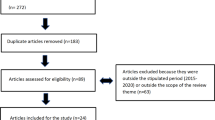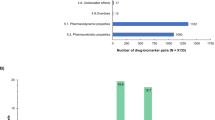Abstract
Pharmacogenomics (PGx) or biomarker (BM) has the potential to facilitate the development of safer and more effective drugs in terms of their benefit/risk profiles by stratifying population into categories such as responders/non-responders and high-/low-risks to drug-induced serious adverse reactions. In the past decade, practical use of PGx or BM has advanced the field of anti-cancer drug development. To identify the characteristics of the PGx/BM-guided clinical trials for regulatory approval of anti-cancer drugs in Japan, we collected information on design features of ‘key trials’ in the review reports of anti-cancer drugs that were approved after the implementation of the ‘Revised Guideline for the Clinical Evaluation of Anti-cancer drugs’ in April 2006. On the basis of the information available on the regulatory review data for the newly approved anti-cancer drugs in Japan, this article aims to explain the limitations and points to consider in the study design of PGx/BM-guided clinical trials.
Similar content being viewed by others
Log in or create a free account to read this content
Gain free access to this article, as well as selected content from this journal and more on nature.com
or
References
Uyama, Y., Ishiguro, A., Nakamura, H. & Toyoshima, S. Use of Biomarker in Drug Development-Japanese Perspectives, Predictive Approaches in Drug Discovery and Development 269–287 (John Wily & Sons, Inc.: Hoboken, New Jersey, 2012).
Maliepaard, M., Nofziger, C., Papaluca, M., Zineh, I., Uyama, Y., Prasad, K. et al. Pharmacogenetics in the evaluation of new drugs: a multiregional regulatory perspective. Nat. Rev. Drug. Discov. 12, 103–115 (2013).
Sawyers, C. L. The cancer biomarker problem. Nature 452, 548–552 (2008).
Institute of Medicine of the National Academies. Genome Based Therapeutics: Targeted Drug Discovery and Development: Workshop Summary, (The National Academies Press: Washington D.C., 2012).
Otsubo, Y., Ishiguro, A. & Uyama, Y. Regulatory perspective on remaining challenges for utilization of pharmacogenomics-guided drug developments. Pharmacogenomics 14, 195–203 (2013).
Poste, G., Carbone, D. P., Parkinson, D. R., Verweij, J., Hewitt, S. M. & Jessup, J. M. Leveling the playing field: bringing development of biomarkers and molecular diagnostics up to the standards for drug development. Clin. Cancer. Res. 18, 1515–1523 (2012).
Arrowsmith, J. Trial watch: phase III and submission failures: 2007-2010. Nat. Rev. Drug. Discov. 10, 87 (2011).
Arrowsmith, J. Trial watch: phase II failures: 2008-2010. Nat. Rev. Drug. Discov. 10, 328–329 (2011).
Kola, I. & Landis, J. Can the pharmaceutical industry reduce attrition rates? Nat. Rev. Drug. Discov. 3, 711–715 (2004).
Jorgensen, A. L. & Williamson, P. R. Methodological quality of pharmacogenetic studies: issues of concern. Stat. Med. 27, 6547–6569 (2008).
Stingl Kirchheiner, J. C. & Brockmöller, J. Why, when, and how should pharmacogenetics be applied in clinical studies?: current and future approaches to study designs. Clin. Pharmacol. Ther. 89, 198–209 (2011).
Notification no, 1101001. Revised Guideline for the Clinical Evaluation of Anti-cancer drugs (Evaluation and Licensing Division, Pharmaceutical and Food Safety Bureau, Ministry of Health, Labour and Welfare, 2005).
Notifications no. 4 and 104. New drug applications based on public knowledge (Research and Development Division, Health Policy Bureau and Evaluation and Licensing Division, Pharmaceutical and Medical Safety Bureau, Ministry of Health, Labour and Welfare, 1999).
Simon, R. Clinical trials for predictive medicine. Stat. Med. 31, 3031–3040 (2012).
Ziegler, A., Koch, A., Krockenberger, K. & Grosshennig, A. Personalized medicine using DNA biomarkers: a review. Hum. Genet. 131, 1627–1638 (2012).
Kesselheim, A. S., Myers, J. A. & Avorn, J. Characteristics of clinical trials to support approval of orphan vs nonorphan drugs for cancer. JAMA 305, 2320–2326 (2011).
Shepherd, F. A., Rodrigues, Pereira, J., Ciuleanu, T., Tan, E. H., Hirsh, V. & Thongprasert, S. Erlotinib in previously treated non-small-cell lung cancer. N. Engl. J. Med. 353, 123–132 (2005).
Mok, T. S., Wu, Y. L., Thongprasert, S., Yang, C. H., Chu, D. T. & Saijo, N. Gefitinib or carboplatin- paclitaxel in pulmonary adenocarcinoma. N. Engl. J. Med. 361, 947–957 (2009).
Wang, S. J., O'Neill, R. T. & Hung, H. J. Statistical considerations in evaluating pharmacogenomics-based clinical effect for confirmatory trials. Clin. Trials. 7, 525–536 (2010).
Gaddipati, H., Liu, K., Pariser, A. & Pazdur, R. Rare cancer trial design: lessons from FDA approvals. Clin. Cancer. Res. 18, 5172–5178 (2012).
Ando, Y. & Uyama, Y. Multiregional clinical trials: Japanese perspective on drug development strategy and sample size for Japanese subjects. J. Biopharm. Stat. 22, 977–987 (2012).
Draft guideline. Reflection paper on methodological issues associated with pharmacogenomic biomarkers in relation to clinical development and patient selection (European Medicines Agency, 2011).
Draft guidance for Industry. Enrichment Strategies for Clinical Trials to Support Approval of Human Drugs and Biological Products (US Food and Drug Administration, 2012).
Acknowledgements
The views expressed in this article are those of the authors and do not necessarily reflect the official views of Pharmaceuticals and Medical Devices Agency.
Author information
Authors and Affiliations
Corresponding author
Ethics declarations
Competing interests
The authors declare no conflict of interest.
Rights and permissions
About this article
Cite this article
Ishiguro, A., Yagi, S. & Uyama, Y. Characteristics of pharmacogenomics/biomarker-guided clinical trials for regulatory approval of anti-cancer drugs in Japan. J Hum Genet 58, 313–316 (2013). https://doi.org/10.1038/jhg.2013.36
Received:
Accepted:
Published:
Issue date:
DOI: https://doi.org/10.1038/jhg.2013.36
Keywords
This article is cited by
-
Pharmacogenomics in the clinic
Nature (2015)
-
Recent trends for drug lag in clinical development of oncology drugs in Japan: does the oncology drug lag still exist in Japan?
International Journal of Clinical Oncology (2015)



